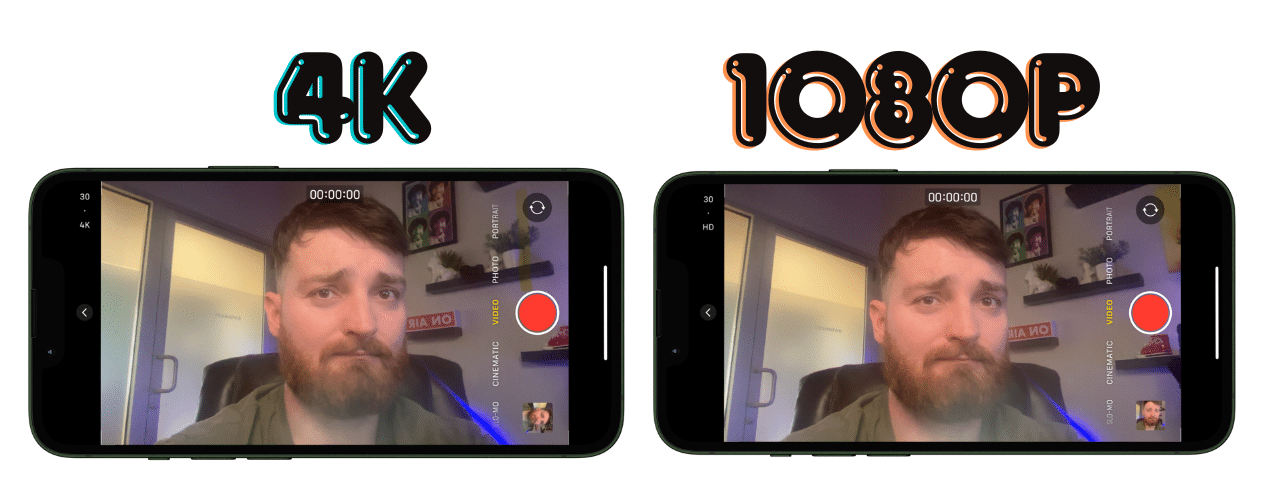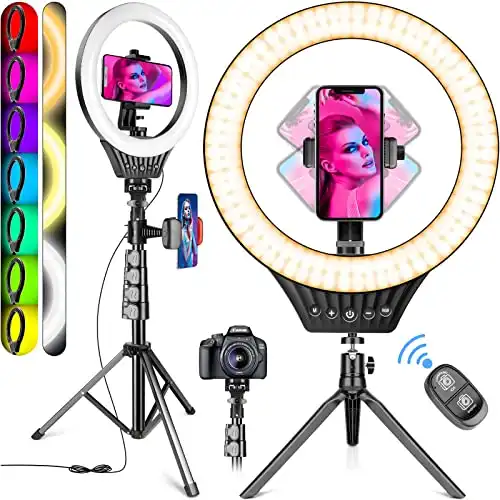One of the biggest hurdles people have when it comes to making money on the Amazon influencer program is editing their videos. It's not something the average person does a lot.
If this is you, fear not!
Because in this article, I'm going to give you both general and specific tips for editing your videos properly and efficiently.
Editing for Amazon is unique, so whether you're an experienced video editor or a complete newbie, you'll get something out of this.
Tip #1 Leverage Occum's Razor (Simple Is Better)
Occum's Razor refers to the idea that the simplest explanation is preferable to one that is more complex.
When it comes to editing your Amazon influencer videos, the simpler approach is generally better.
Traditional Video Editing | Amazon Influencer Video Editing |
|---|---|
Requires a lot of time | Doesn't require a lot of time |
Uses a lot of b-roll | Uses minimal b-roll |
Uses music | Shouldn't use music |
Uses sound effects | Shouldn't use sound effects (optional) |
Requires near perfect audio | Requires clear audio |
Uses fancy transitions | Uses basic jump cuts |
If you lack editing skills, congratulations! You'll have less temptation to waste time on fancy animations and effects that don't move the needle.
Focus on videos that explain the product, answer the customer buying objections and are quality enough that you can be taken seriously.
Although I'm a fan of subtle background music in videos, I strongly advise against using any sort of music in your Amazon influencer videos. Yes, I know people do it and yes, I agree it's not a guarantee to be an issue, but here's why I think you shouldn't spend time on music.
#1 Copyright concerns. I've been in the Amazon space for over a decade and I can tell you that they are a nightmare to deal with in terms of IP or copyright claims. Even if you own the rights to a song, there is little guarantee that Amazon won't still hold that against you. Amazon doesn't give their partners the benefit of the doubt in these cases. If someone files a complaint, you're in trouble and it's a nightmare to get out of it.
#2 Most don't do it right. The goal of music in a video is to make it more watchable and enjoyable. If the music is off, it has the reverse effect. Many people use music without understanding how to properly set the volume levels to make sure that the voice audio cuts above the noise or how to sync up music with the video to really give it the same value you associate with music in high quality videos. Also, corny music can give your videos a cheap, salesy feel that could make people less interested in buying.
#3 Inefficient use of time. We want viewers to watch 100% of our videos, but music isn't as valuable in these cases since the videos we make are usually far shorter than on other platforms. I've seen no good correlation between music and conversions.
Tip #2 Do Your Research
What you say is just as important as how it's recorded. Doing your research before you record a video will help you ...
- Save time
- Create higher converting videos
- Earn more money in less time!
The biggest bit of research you need to do is to check the Amazon Q+A for the product. Answering those questions is a secret sales hack that will boost your commissions big time.

We could/should answer these questions as talking points in our video.
Having 3-4 core points that answer the questions that lead people to buy is the recipe for conversions and less wasted time editing out ramblings and things that bring no real value to the perspective buyer.
Tip #3 Audio Matters
Crisp, clear and balanced audio is just as important as your video, if not more so.
If you don't believe me, watch this short video.
I highly recommend investing in a good lavalier mic to pair with your camera or smartphone.
This is the one I use but they make good ones at lower price ranges. Even the built in mic on iPhones and other high end smartphones is enough as long as you...
- Limit or remove background noise.
- Keep the mic at a consistent distance away (not further or closer).
When editing, make sure that the audio is at an appropriate volume. Ideally though, you will do this during the recording so you won't need to even spend time on this part.
Listening to the video yourself is usually enough to confirm if it's good or not, but you can also read this article that explains what sorts of volume ranges to use in videos.
If you use a tool like CapCut Pro, you can use their "Enhance voice" or "Loudness normalization" features if you don't love the way the audio recording came out.

Again though, if you record the audio like I told you above, you won't need to do this in most cases.
Tip #4 Don't Overthink the Camera
As long as you're recording is at least 1080P, you're fine.
4K is great, but given the fact that people are watching your videos either on their browser or mobile devices, you can barely tell the difference.
In fact, I bet most people couldn't unless you gave them some time to really look closely.

I generally record in 4K with the camera on the back of the iPhone, but it's not mandatory.
Pro Video Recording Tip
The resolution gets most of the attention from newbie video creators, but the frame rate is just as important. I used to think that a higher frame rate (like 60 FPS) meant I was getting better footage. In reality, I was getting abnormal footage. The human eye perceives 24 frames per second. Anything beyond that appears unnatural. Unless you're doing slow motion videos, set your smartphone or camera to 24 FPS or 30 FPS. This will produce smaller file sizes and look more natural. It's what most movies are recorded in, so you're in good company.
Don't fall into the age old problem of letting your desire for the latest and greatest gear keep you from taking action now.
If you have a smartphone, the camera on that is more than enough.

Now, don't get me wrong, I love my fancy equipment.
I recently invested in a DJI Osmo Pocket 3 and love it, but it's far from a requirement for Amazon influencer videos. I still often record with just my smartphone.
Gear should make you record better footage AND more of it. If it's not doing both of those things, it's probably not worth it.
Tip #5 Have a Repeatable Workflow
Creating your own system will help you create videos much more efficiently. The "best" system is the one that works best for you. Whichever method helps you flow through your video creation process best is what you should do.
Here's what my workflow looks like.

I also recommend having a "home base" for your basic recordings. This is a place that has consistent lighting and acoustics and will work for a good percentage of your videos.
Here's a great example of one.

This is essential if you do live streams, but it's also a productivity hack for regular videos.
Yes, even for videos that would require you to go outside or to a different location to demonstrate. My friend Liz does this very well.
She records footage of the product demo but then does her voice over in her optimized work area that has better lighting and audio.

This is going to give you the ability to get consistent audio and lighting in all of your videos as well as make it easier to "batch" record in bulk.
You could go out and record your demo footage and then bring it back and sit down and record multiple voice over videos like Liz does here.
Again, this isn't mandatory, but it's a productivity hack that seems to be common in the top creators on the platform.
Tip #6 Save All Assets
Amazon is constantly adding new marketplaces to their influencer program. Cross posting our videos is a great way to get more sales from the work we've already done.
Also, we can use our videos from Amazon on other platforms.
Warning about Cross Posting
Never upload videos you created on social media platforms to Amazon if you used any sort of media elements from the platform you made them on.
For example, never use AI voices, music or stiched videos from other creators.

Even if you aren't currently approved on other marketplaces, save your videos and thumbnails somewhere like Google Drive.

I prefer Drive because it's affordable, easy to use and can store images and videos in the same folders.
Tip #7 Use CapCut Filler Word Removal
Since we're focused on minimal editing, we need to be sure to edit things out much more than we're editing them in.
Perhaps it's a bit too dramatic for this post, but this is one of my all time favorite quotes.
"Perfection is achieved, not when there is nothing to add, but when there is nothing left to take away." -Antoine de Saint ExupéryThe best things to remove our are...
- Redundancies - You'll find yourself repeating the same talking points at times almost as a filler to make sure you don't stop talking. Remove these. As you record more videos, you'll get better at not just rambling. For now, ramble and edit later.
- "Ums" and "Ahs" -These aren't the end of the world. They actually give a little bit of realness to your videos. However, editing them out will shorten your videos and make them easier to watch.
- Blank space - Any empty air time that isn't demoing the product should be cropped out of your videos.
This is where CapCut comes in. They have a one click feature that will automatically remove all of this for you.

CapCut will then show you exactly what they suggest taking out. You can approve it or go through it manually to ensure nothing you don't want removed is accidentally removed.

I've found that it's quite accurate and it errs on the side of removing less instead of more. However, for a short video, there's no harm in double checking.
Tip #8 Use Your Desktop for Editing
Although there are plenty of great mobile apps for editing videos, I prefer using a desktop app for the process. Desktop versions of free tools like CapCut give you more space to work. You can see your timeline clearly and it's just a much more usable experience.

Using a mouse and keyboard is much easier than using your fingers on a small device.
Now, learning how to edit in CapCut mobile is a worthwhile skill, especially if you also create short form videos for platforms like TikTok, YouTube Shorts or Instagram Reels. For simple Amazon influencer videos though, I highly suggest moving your videos over to your desktop for editing.
Pro Recording Tip
When recording yourself, pause for 5 seconds on slip ups instead of restarting recording. You don't need to start your recording from scratch every time you misspeak or become tongue tied. This small pause has a purpose. It will be visible on your time line. When you see these soundless gaps, it will show you exactly where you need to go and remove something.

Another method is to do the opposite and instead of having silence, clap your hands right next to the mic. This will add a large audio wave spike that is hard to miss. This is similar to what professional cameramen do when they use that classic video clapboard at the beginning of recordings. It not only helps organize shots by scene, it also helps them sync up the audio for multiple microphones.
Recommended Gear and Programs for Amazon Influencers
Here are the tools I use and recommend for Amazon influencers. Keep in mind, I recommend using your smartphone until you can justify investing in a camera like the DJI Osmo Pocket I mention.









